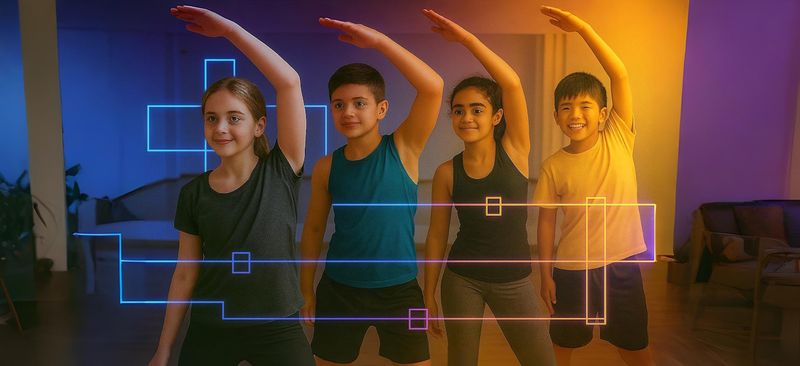Introduction
In our earlier article, Forever Elsewhere, we described how smartphones and social media rewired attention, particularly among adolescents.
But distraction is only one side of the equation. This article turns to what is lost when attention fragments: synchrony. The shared rhythms of real-world, real-time interaction, looking, laughing, playing, attuning, are not just pleasant. They are developmental necessities. Without them, the adolescent brain builds itself in a different, often dysfunctional, way.
Several of the arguments outlined here are inspired by the work of Jonathan Haidt, especially his book The Anxious Generation.
The Brain Expects Synchrony
Human development unfolds through connection. In infancy, the brain begins wiring for empathy, regulation, and communication not in solitude, but in social timing: eye contact, turn-taking, mimicry. This is called attunement, and it begins with a caregiver’s face and continues into adolescence through peers, mentors, and shared experiences.
These synchronous, embodied experiences include:
- Physical free play with others
- Shared emotional reactions, laughing, gasping, syncing expressions
- Cooperative activities, games, rituals, challenges
- Face-to-face mimicry and real-time feedback
They are not optional. They are how we learn social navigation, emotional regulation, and identity.
The Role of Free Play and Unstructured Interaction
For most of human history, children spent large portions of their day in unsupervised, real-world play. This is where they learned to negotiate, resolve conflict, build alliances, and explore identities, through spontaneous feedback from peers.
Jonathan Haidt emphasizes that free play among children is where the brain’s social regions get "exercised" most efficiently. It teaches timing, empathy, and restraint, not through rules imposed by adults, but through synchrony and consequences among equals.
See also:
In digital life, however, this is replaced by:
- Curated identity performance
- Asynchronous interaction
- Algorithmic exposure
- Feedback from strangers
The Self Takes Shape in a Social Mirror
The ages 9 to 15 are a critical window for identity formation. This is when the self begins to consolidate, based on social feedback, imitation, and internalized responses from others.
Traditionally, this occurred through direct peer engagement: shared laughter, embarrassment, failure, and group belonging. Now, it’s shaped through online metrics: likes, followers, views.
“This is the period when children used to become more engaged with the wider social world, and through those engagements, they shaped their emerging sense of self.”
— Jonathan Haidt, The Anxious Generation, p. 63
The danger is not just what is added (social media), but what is replaced, the interpersonal synchrony that once grounded development.
Sean Parker and the Feedback Loop
Sean Parker, founding president of Facebook, famously said the platform was designed to exploit a “social-validation feedback loop”, a mechanism that delivers dopamine hits via likes, notifications, and mentions.
“We needed to sort of give you a little dopamine hit every once in a while, because someone liked or commented on a photo… exploiting a vulnerability in human psychology.”
— Sean Parker, 2017
These micro-rewards are particularly potent in adolescents, whose dopaminergic systems are hypersensitive to social status.
Social media doesn't just occupy time, it alters the source and structure of validation.
From Excellence to Celebrity
Haidt distinguishes between three forms of social striving:
- Excellence: Built through mastery and contribution
- Prestige: Recognition from peers and elders for real skill
- Celebrity: Attention without substance, recognition detached from effort
Online culture accelerates celebrity as a dominant social currency, especially for adolescents. Performance overshadows process. Visibility becomes the goal, not mutual connection, not shared development.
This undermines the formative values of delayed gratification, resilience, and real-world excellence.
Social Learning Needs Faces
Key brain regions responsible for empathy, reading intentions, and understanding others, like the temporoparietal junction and medial prefrontal cortex, develop through face-to-face interaction.
Children learn by watching facial micro-expressions, mimicking tone, posture, and rhythm. This is how social learning occurs, not through text, not through likes, not through avatars.
When children lose these opportunities, their ability to read others diminishes. They become less attuned, more anxious, more isolated, ironically, despite being constantly “connected.”
When Satisfaction Declines
Multiple longitudinal studies now show a negative correlation between social media use and life satisfaction, especially in adolescent girls.
- Higher screen time, lower self-reported happiness
- More online interaction, more loneliness
- Less real-world play, less emotional resilience
This is not a matter of personal preference. It’s a matter of neurodevelopmental cost.
Reclaiming the Real
To restore healthy development, we don’t need to demonize technology, but we must prioritize real-world rhythm.
- Protect unstructured free play
- Promote in-person, multi-age interaction
- Restrict social media exposure before the self is fully formed
- Create screen-free spaces where synchrony can happen
Children don’t just need freedom from distraction. They need freedom to attune.
Conclusion
Children are not just learning what to think. They are learning how to relate, how to feel, how to belong. These are skills that form in synchrony, with others, in real time, in shared space.
A culture that replaces face-to-face mimicry with filtered self-display creates a generation that is not just distracted, but developmentally deprived.
To reclaim synchrony is not nostalgia. It’s neurobiology.



